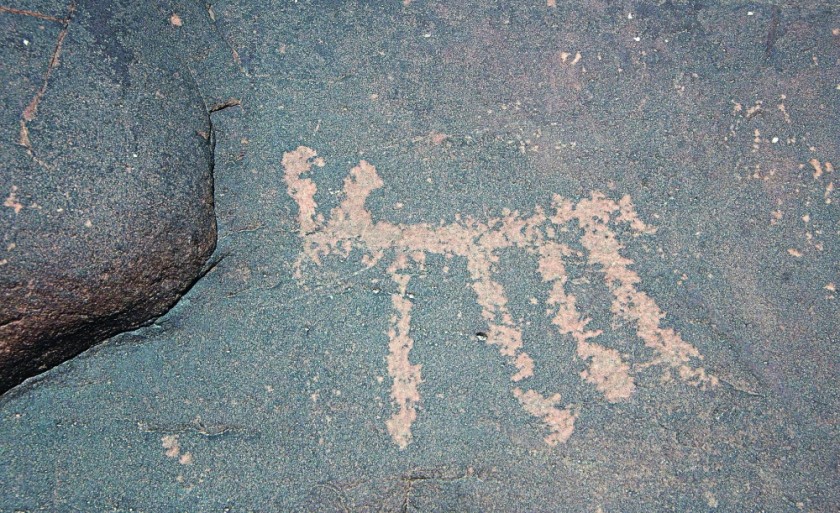

The inscriptions and drawings on rocks, walls and wooden doors of ancient mosques and tombs trace the progress of history of successive civilisations. Most of them are found in caves illustrating the life and society in ancient times.
Hunting tools are among the most common drawings. Some of these drawings resemble the letters of ancient Arabic alphabets.
Archaeological excavations and surveys in the Sultanate of Oman reveal the presence of rock drawings dating back to the Stone Age (5000 -10,000 years) showing animals, humans, ships and trees.
Rare inscriptions of ancient Arabic calligraphy were also found in Al Rustaq. A large number of Hadrami inscriptions were found in the Dhofar Governorate. Some of the Arabic inscriptions painted on pottery jars dated back to the second half of the third millennium BC.
In most cases, inscriptions on rocks that were found far from the streams of valleys stayed intact for a long period. There are drawings on the reclamation of agricultural lands and the construction of aflaj, details about drought, family trees, and inscriptions of Qur’anic verses, Hadiths and poems.
The sizes of the rocks on which these topics are engraved vary, some of which reach about 6 square meters. The large rocks contain more than one topic, documenting important events that occurred during a particular era.


Dr Saleh bin Amer al Kharousi said, “In the mountains and caves of the Sultanate of Oman, multi-form drawings were found, the most prominent of which are drawings of animals such as camels and horses. The trend towards rock writing was probably to satisfy the desire to practice an art that does not clash with the restrictions there were in vogue.” Dr Al Kharousi said “due to the lack of easy means of writing during those periods, people resorted to engraving on stone to document events so that future generations could see them”.
There seems to be an urgent need to conduct a comprehensive survey of the sites of drawings, inscriptions and rock inscriptions by specialists for accuracy and fill in the gaps in history.
Thanks to some social media users, some of the sites with inscriptions are easy to find. Most of these inscriptions are located in valleys and on steep paths in the foothills of the mountains. It may be difficult to reach some of these sites without a tour guide or local people.
Specialists in archaeology called upon authorities to pay attention to these rare archaeological sites, which fall prey to elements or are damaged by acts of vandalism.
TEXT& PHOTOS BY YAHYA AL SALMANI
Oman Observer is now on the WhatsApp channel. Click here



